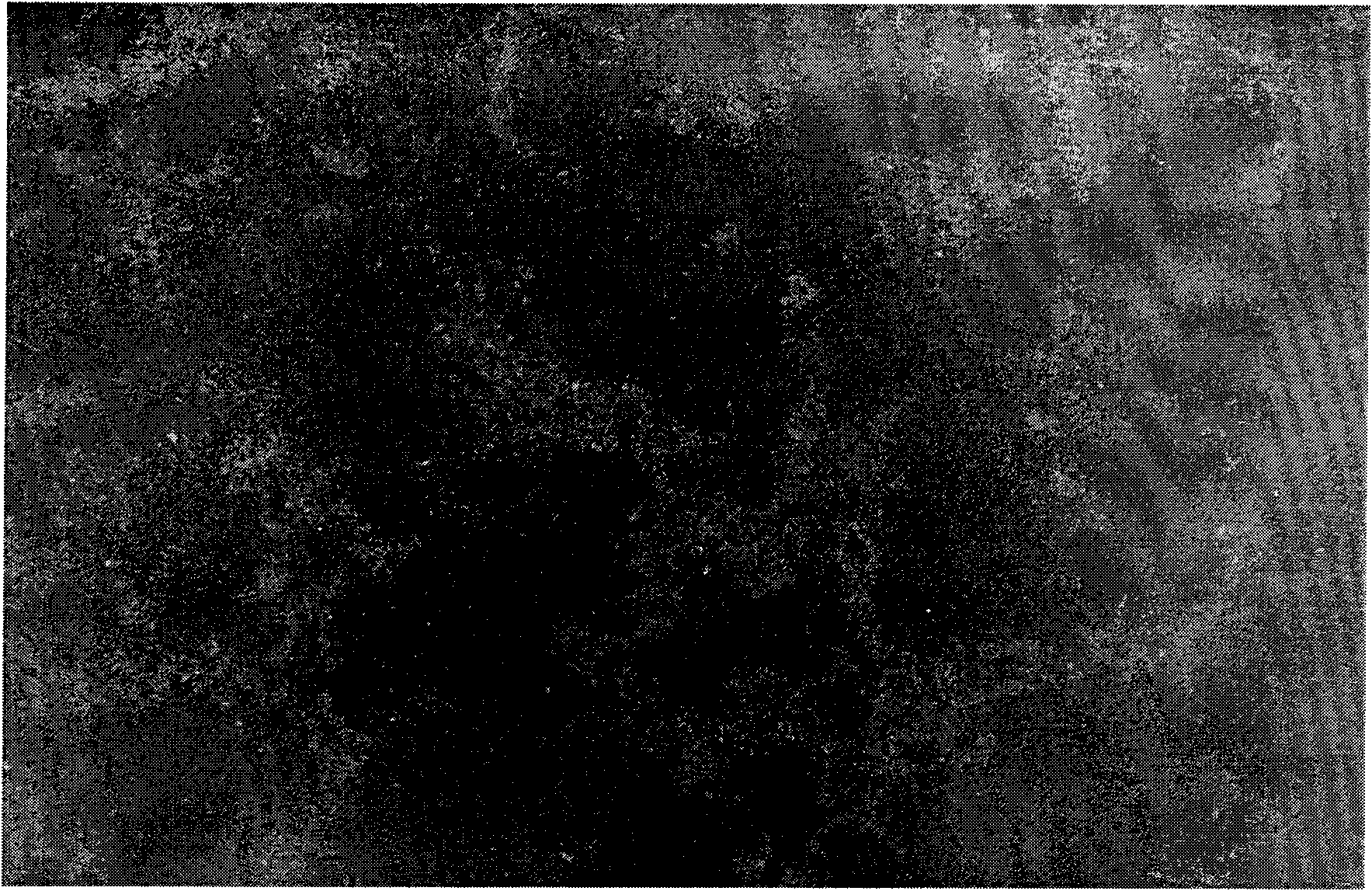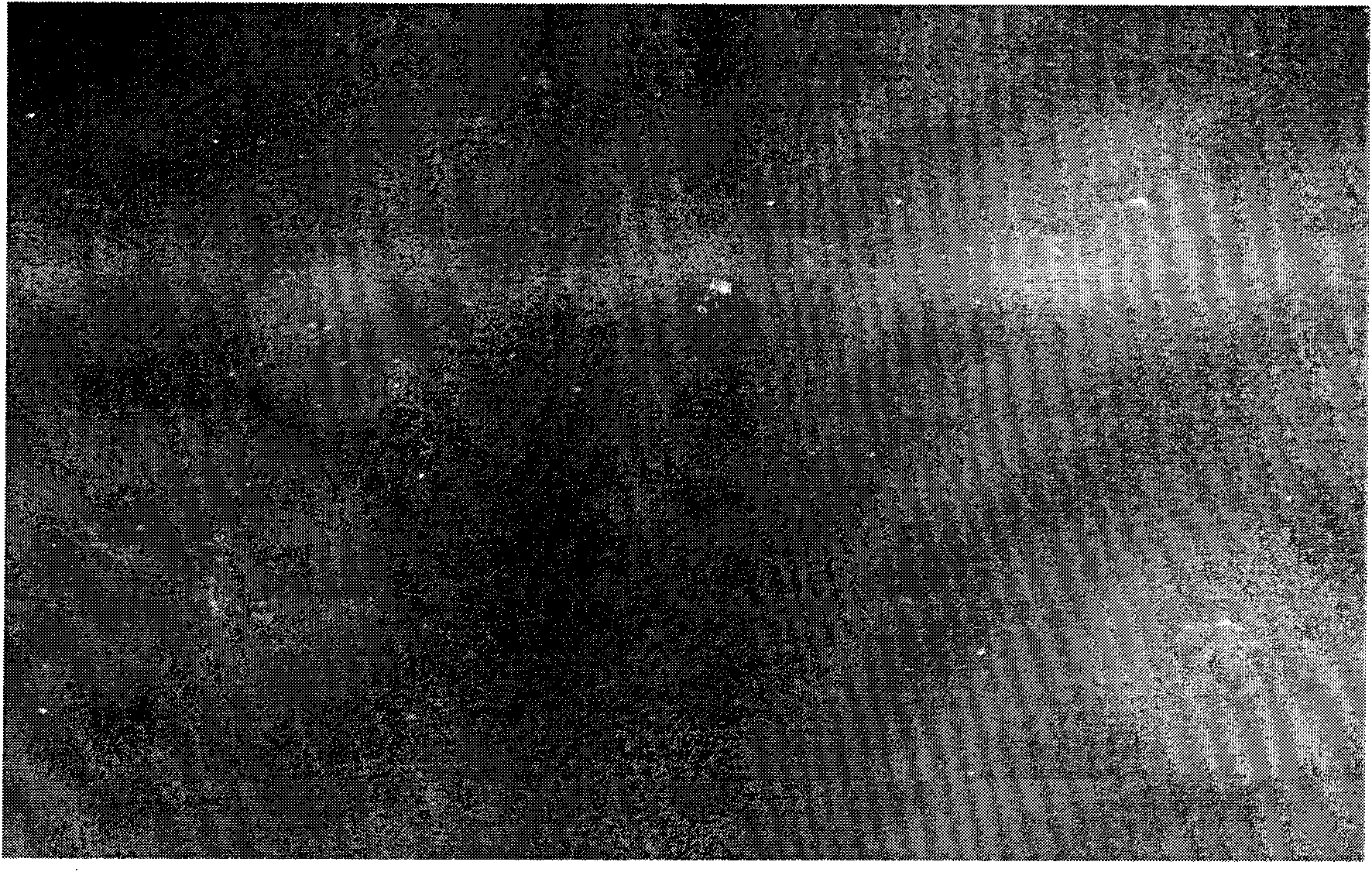Self-cleaning antibacterial ceramic glaze and preparation method and ceramic product thereof
A technology of antibacterial ceramics and ceramic glazes, applied in ceramic glazes and its application fields, can solve the problems of high cost and achieve the effect of high glaze flatness, fine and compact crystal quality, and greatly increased bactericidal ability
- Summary
- Abstract
- Description
- Claims
- Application Information
AI Technical Summary
Problems solved by technology
Method used
Image
Examples
Embodiment 1
[0020] Prepare the ceramic glaze according to the following proportions: 39% potassium feldspar, 11% marble, 38% silica, 4% antibacterial agent, and 8% titanium dioxide. All are percentages by weight.
[0021] (1) Potassium feldspar, marble, silica, antibacterial agent and titanium dioxide are mixed through a ball mill, and ground in a ball mill for 20 hours;
[0022] (2) After mixing evenly, filter through a vibrating sieve three times to remove iron;
[0023] (3) After iron removal, after 2 days of decontamination, the remaining small amount of impurities sinks in the lower layer, and after filtration, the finished ceramic glaze is obtained. After determination, its composition and ratio are: SiO 2 52%, Al 2 o 3 9%, CaO 10%, K 2 O 6%, Na 2 O 1%, ZnO 3%, Li 2 O 3%, TiO 2 8%, V 2 o 5 3%, Ag 2 o 3 5%;
[0024] (4) Spray the finished ceramic glaze on the ceramic body and fire at a high temperature of 1200°C to obtain the finished product.
[0025] Using a micros...
Embodiment 2
[0028] Prepare the ceramic glaze according to the following proportions: 40% potassium feldspar, 13% marble, 38% silica, 4% antibacterial agent, and 5% titanium dioxide. All are percentages by weight.
[0029] (1) Potassium feldspar, marble, silica, antibacterial agent and titanium dioxide are mixed through a ball mill, and ground in a ball mill for 26 hours;
[0030] (2) After mixing evenly, filter through a vibrating sieve 4 times to remove iron;
[0031] (3) After iron removal, after 3 days of decontamination, the remaining small amount of impurities sinks in the lower layer, and after filtration, the finished ceramic glaze is obtained. After determination, its composition and ratio are: SiO 2 68%, Al 2 o 3 8%, CaO 9%, K 2 O 5%, Na 2 O 0.5%, ZnO 0.5%, Li 2 O 1%, TiO 2 6%, V 2 o 5 1%, Ag 2 o 3 1%;
[0032] (4) Spray the finished ceramic glaze on the ceramic body and fire at a high temperature of 1270°C to obtain the finished product.
Embodiment 3
[0034] Prepare the ceramic glaze according to the following proportions: 43% potassium feldspar, 12% marble, 38% silica, 2% antibacterial agent, and 5% titanium dioxide. All are percentages by weight.
[0035] (1) Potassium feldspar, marble, silica, antibacterial agent and titanium dioxide are mixed through a ball mill, and ground in a ball mill for 24 hours;
[0036] (2) After mixing evenly, filter through a vibrating sieve 5 times to remove iron;
[0037] (3) After iron removal, after 4 days of decontamination, the remaining small amount of impurities sinks in the lower layer, and after filtration, the finished ceramic glaze is obtained. After determination, its composition and ratio are: SiO 2 72%, Al 2 o 3 5%, CaO 6%, K 2 O 2%, Na 2 O 1.5%, ZnO 2.5%, Li 2 O 2%, TiO 2 4%, V 2 o 5 2%, Ag 2 o 3 3%;
[0038] (4) Spray the finished ceramic glaze on the ceramic body and fire at a high temperature of 1260°C to obtain the finished product.
[0039] The ceramic pro...
PUM
 Login to View More
Login to View More Abstract
Description
Claims
Application Information
 Login to View More
Login to View More - Generate Ideas
- Intellectual Property
- Life Sciences
- Materials
- Tech Scout
- Unparalleled Data Quality
- Higher Quality Content
- 60% Fewer Hallucinations
Browse by: Latest US Patents, China's latest patents, Technical Efficacy Thesaurus, Application Domain, Technology Topic, Popular Technical Reports.
© 2025 PatSnap. All rights reserved.Legal|Privacy policy|Modern Slavery Act Transparency Statement|Sitemap|About US| Contact US: help@patsnap.com


